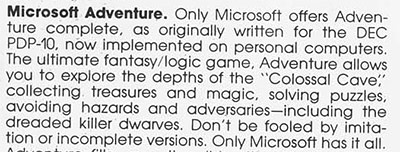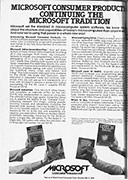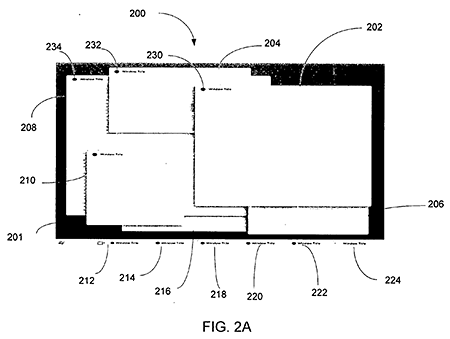Todd Bishop, one of the best blogging journalists I should add, has composed an interesting collection of popular keywords used in approximately 90 documents (speeches, memos, emails, interviews) spanning the three decades of Microsoft history. The way he presented the information is fun and easy to use, in pure Web 2.0 tradition, complete with custom controls and tag-clouds.
Through this, Todd has also published several rare documents from the early year of Microsoft including this gem from 1980, “Microsoft Consumer Products continuing the Microsoft tradition“, a magazine advertisement. (Pictured right)
Highlights from this document showing a very young and naive Microsoft include:

Little did they know that the advantage from this ‘extra knowledge’ would be later deemed illegal and become one of the most famous lawsuits in history.

Back in the days when software was written by a single programmer and came with printed documentations, beyond those found today which removes liability for death and the like from using the software. The definition of “can afford” must have also changed during the last 30 years.

The good ol’ days when games were as simple as avoiding hazards, adversaries and killer dwarves. Oh how it captured our imaginations at the time. Thank god the days of imitation or incomplete softwares are over, when companies accused each other of copying each other delivering products which did not fulfill the expectations of the customer.
Can’t wait to see how stupid we are today after the next 30 years. 🙂
Speaking of 30 years, Apple has something to say too.




 I made several mistakes on the Wednesday, 27th of December 2006. One of which included accusing
I made several mistakes on the Wednesday, 27th of December 2006. One of which included accusing  Windows Vista brings a feature we all love to show off, Flip 3D. A new way to organize and sort windows through a 3D interface resembling much to a ferris wheel. Whether or not it actually increase productivity requires more public feedback or even scientific testing, but it’s pretty at least. However in a
Windows Vista brings a feature we all love to show off, Flip 3D. A new way to organize and sort windows through a 3D interface resembling much to a ferris wheel. Whether or not it actually increase productivity requires more public feedback or even scientific testing, but it’s pretty at least. However in a 